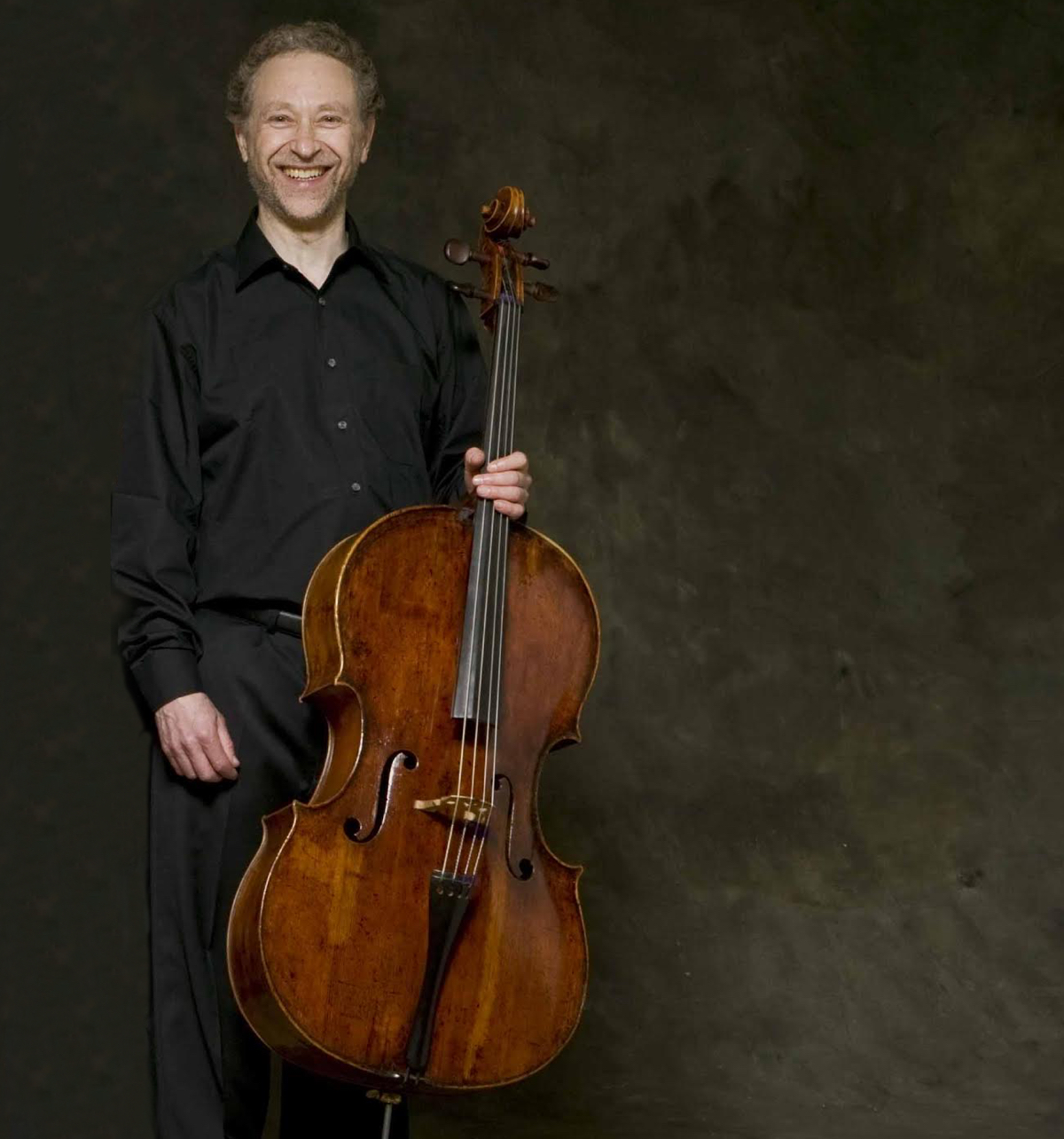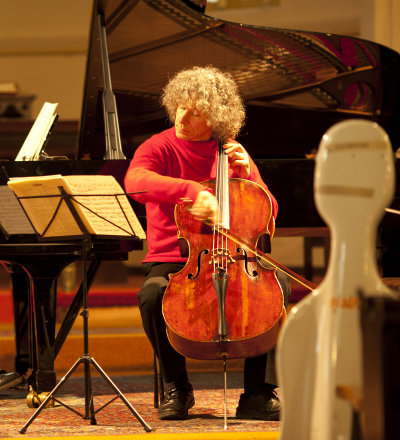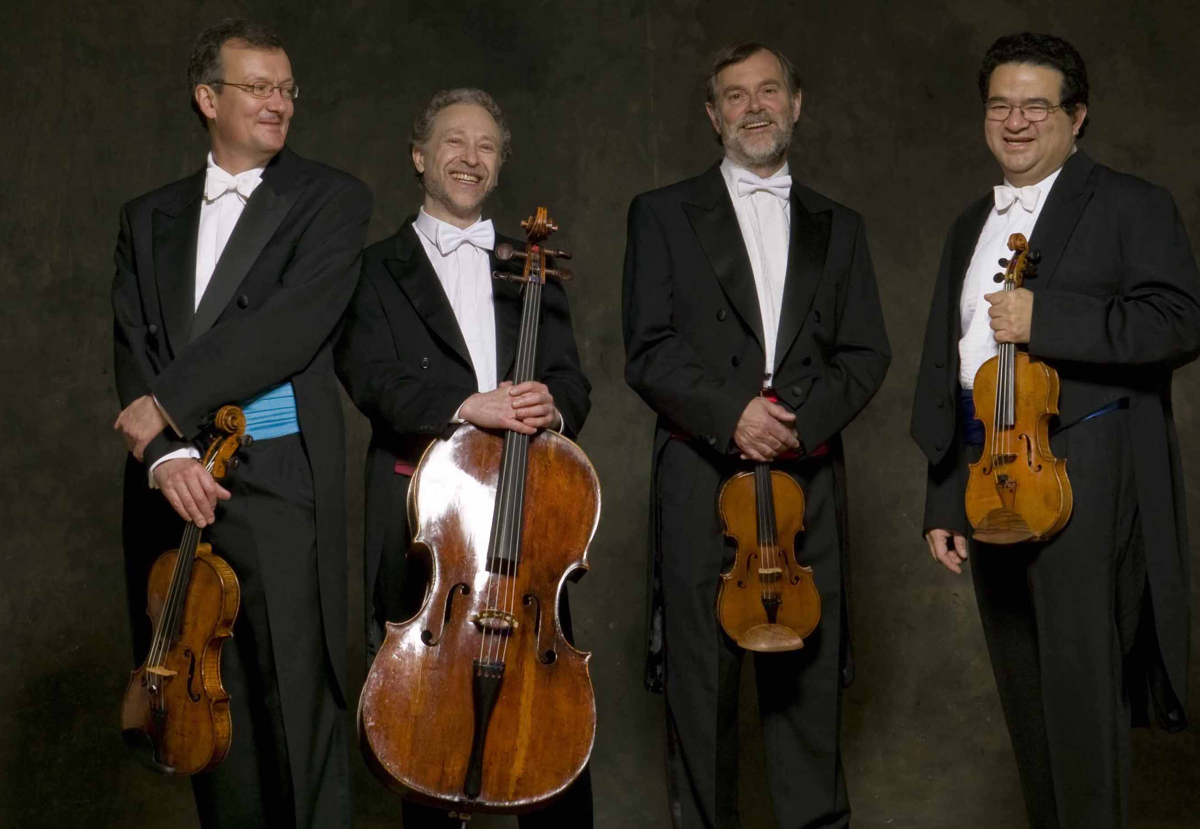David Waterman had long been friends with Steven Isserlis, when one day Isserlis called him out of the blue with a proposition: would Waterman be interested in buying half his Guadagnini cello? ‘Steven needed to raise some money to buy a flat and he knew that I adored the Guadagnini,’ explains Waterman. ‘At the same time he’d been offered the use of the “Feuerman” Strad by the Nippon Foundati on and was in the process of buying a Montagnana. So he was in the surprising position of having three cellos at his disposal.’ Isserlis proposed that Waterman should buy half the Guadagnini (a 1745 example from Piacenza), but would get to use it most of the time. It seemed the perfect arrangement and Waterman borrowed the cello for a few weeks to try it out.

David Waterman with the 1745 Guadagnini. ‘It’s made a huge difference to my playing.’ Photo: Eric Richmond
At this point the deal nearly came unstuck. ‘Under my ear the Guadagnini sounded raucous and almost crude – everything that I knew it wasn’t! If I’d been trying it out from a shop I would probably have taken it back straight away,’ says Waterman. But knowing how good the cello sounded in Isserlis’s hands, he persisted, although it took him weeks to love playing it as much as he loved hearing it. ‘It was partly finding a way to play it. You can’t just pick up a great instrument and play it,’ he says. ‘Now I can’t hear the slightest raucousness in it, but I think that’s partly because my ears have adjusted to a different type of sound. It was a real lesson in how one’s ears and expectations change over time.’
‘Under my ear the Guadagnini sounded raucous and almost crude – everything that I knew it wasn’t!’
The arrangement has been in place for over ten years now, and Waterman says it works extremely well. Both cellists use a similar set up with gut strings, which makes sharing the instrument much easier, as does the fact that they live close to each other in north London. Although the formal agreement is that Isserlis can use the cello 20% of the time, in fact he calls on it much less than that. One of those times is at Prussia Cove, the International Musicians Seminar held in Cornwall every year, which both cellists attend. Waterman then goes back to his former instrument, a 1690 Francesco Rugeri. ‘It’s a beautiful cello but I find it hard to adjust to it after the Guadagnini. It takes me at least a week of hard work to feel comfortable on it. Going in the other direction it’s only an hour or two as the Guadagnini is very easy to play. On the Rugeri I feel that each note almost has its own way of playing and you have to really know it, whereas the Guadagnini is very even from top to bottom.’

As part of the agreement, Steven Isserlis plays the Guadagnini at the International Musicians Seminar Prussia Cove each year. Photo: Miles Essex
Can Waterman hear any difference in the Guadagnini after Isserlis has played it? ‘I sometimes can tell that he’s been playing it. Sometimes it sounds wonderfully open and resonant when I get it back, but at other times it doesn’t! He tends to play more than I do, so it could be simply down to that, or perhaps it’s because he often uses it at Prussia Cove where it tends to be quite humid.’ It’s a very reliable instrument, he adds. ‘If it ever feels a bit closed up I always find it’s gone back to itself within a day or two. It’s nothing like as temperamental as many cellos.’
‘I think I’m a better player when I go back to the Rugeri… because I’ve learnt a lot from the Guadagnini which I can apply to the Rugeri’
Waterman believes that the Guadagnini has helped him become a better cellist. ‘It’s made a huge difference to my actual playing,’ he says. ‘I found I was forcing less and feeling a more subtle relationship to tone colours. I think I’m a better player when I go back to the Rugeri as well, because I’ve learnt a lot from the Guadagnini which I can apply to the Rugeri.’

Waterman with his Endellion colleagues. The Guadagnini’s clarity of tone has benefited the rest of the quartet, he says. Photo: Eric Richmond
The Guadagnini suits the rest of the Endellion Quartet too, having a depth and darkness of tone, yet good clarity. ‘They liked it very much, partly because they could hear the bass lines more clearly, so the intonation of the whole group was much easier. I doubt I was any louder, but they found the definition was much better.’
Unusually, both the Endellion violinists play Spanish instruments by Jose Contreras. Would Waterman be tempted by a Spanish cello? ‘Contreras cellos are very rare, but they do exist and I would love to try one,’ he says. ‘But I would be very surprised if I found anything that I liked better than the Guadagnini – it is one of the great, great instruments.’